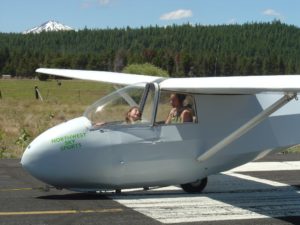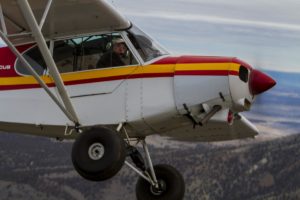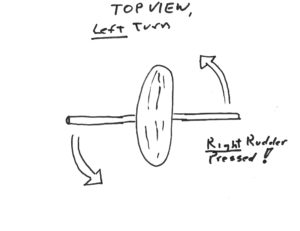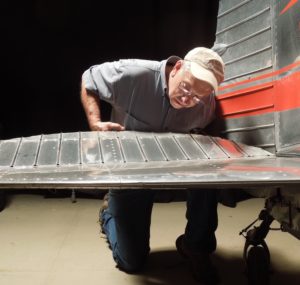I was giving dual in a Husky. Perched in the instructor’s proper seat, the back, I was demonstrating wheel landing technique. My student commented, “I don’t understand how you can fly from the backseat. You can’t see a thing back there, especially at a high pitch attitude.”

I thought about that observation and it made me realize what it is that enables a person to be comfortable flying from the back of any tandem tailwheel airplane. It’s simply familiarization with attitude flying. And attitude flying is a fundamental. Aha! Here we go with fundamentals again. Most tandem tailwheel airplanes will deprive the backseat occupant of a view out the front and often a view of instruments as well.
Bill Warren flew his Chipmunk from the back. If there was a front seat occupant, he couldn’t see any instruments and was “blind” when landing. I remember that he carried a stick with which to reach forward to set the altimeter. The New Standard biplane I flew hopping rides was the blindest taildragger I’ve ever flown. It is an airplane that demands its pilot not only fly attitude, but also use peripheral vision just to judge that attitude. Steve Oliver has a good quote on the subject in “Brian’s Flying Book”. Cubs and Huskys deprive you of a view out the front as well as of the instruments. The Schweizer 2-33 puts the backseater in a “cave” back there with little to see.
The backseat of all these airplanes is where the teacher sits. The person who has to demonstrate maneuvers with some degree of competence must do it from that blind back seat.

Attitude flying is the answer. If you can’t fly attitude, you can’t fly from the back. We should all be comfortable with attitude flying. Many of us were taught attitude flying from the get-go. Most pilots weren’t. My advice to you is to learn it NOW. Start by associating power-off normal glide airspeed with the pitch attitude that will result in that speed. Wean yourself from those instruments. If you have access to a tandem seated airplane, hop in the back and practice.
Every proficient pilot should be comfortable in the backseat of a blind taildragger. If you’re not comfortable there, do what’s necessary to get comfortable there. It will make you a better pilot. Remember that education and practice make good pilots, not just natural ability.
Happy (back seat) Swooping!
Brian



